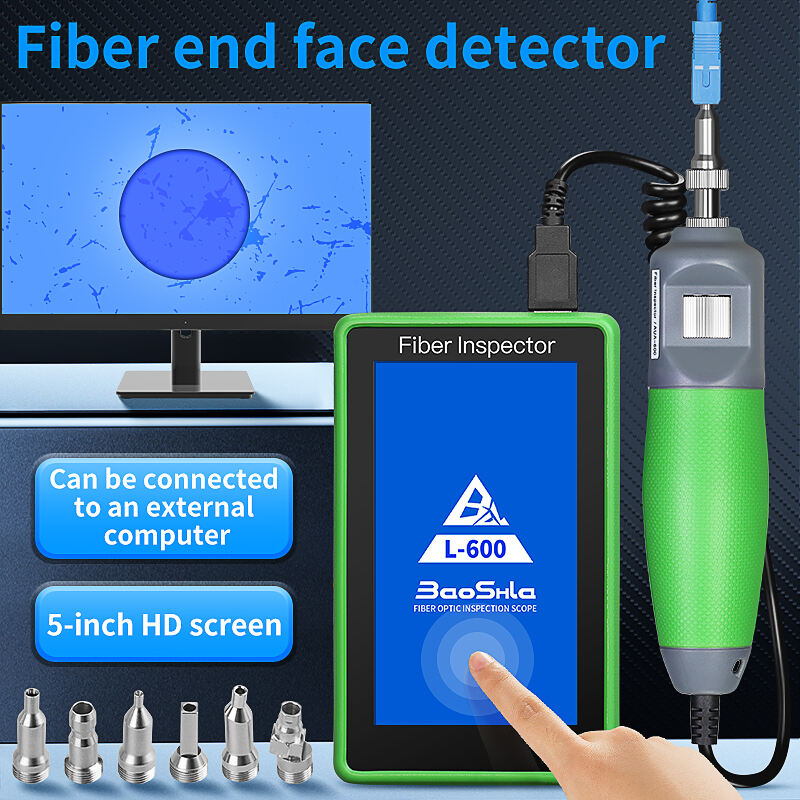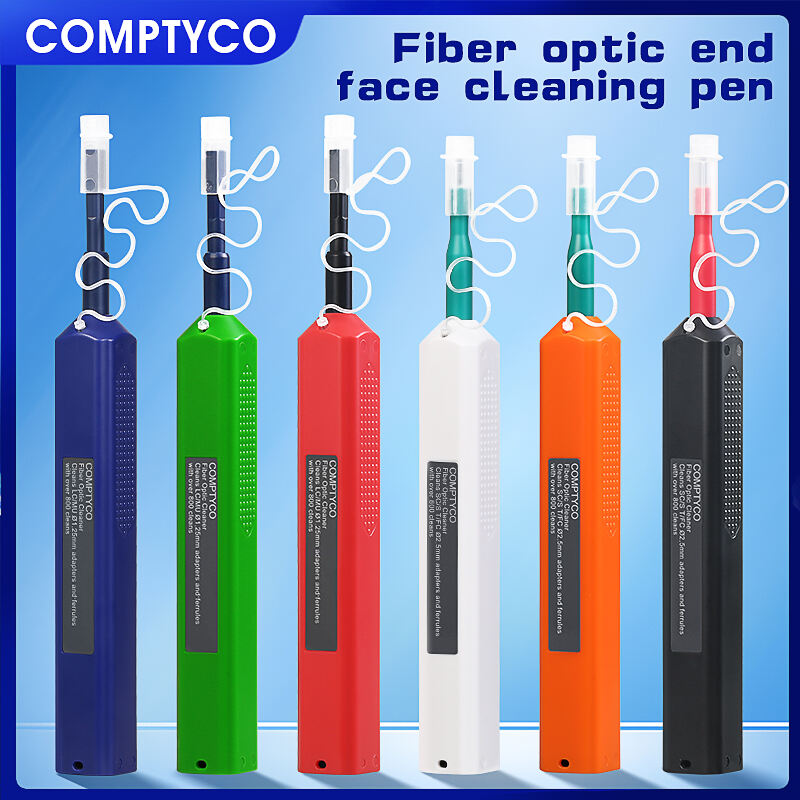Maximizing Network Performance Through Proper Cleaning Methods
The telecommunications industry relies heavily on pristine fiber optic connections to maintain optimal network performance. A fiber optic cleaner serves as the cornerstone of maintaining these vital communication pathways. Network engineers and technicians worldwide recognize that even microscopic contamination can significantly degrade signal quality, making proper cleaning techniques not just recommended, but essential for network reliability.
Modern fiber optic networks form the backbone of our digital infrastructure, transmitting massive amounts of data at lightning speeds. However, this sophisticated technology requires meticulous maintenance to function at its peak. Understanding how to properly use and maintain your fiber optic cleaner can mean the difference between a robust, high-performing network and one plagued by signal loss and connectivity issues.
Understanding Fiber Optic Cleaning Equipment
Types of Cleaning Solutions and Tools
The market offers various types of fiber optic cleaner options, each designed for specific cleaning scenarios. Wet cleaners utilize specialized solvents that break down stubborn contaminants without leaving residue. Dry cleaning tools, including specialized wipes and cassette cleaners, provide quick and effective cleaning for routine maintenance. The choice between wet and dry cleaning methods often depends on the type and level of contamination encountered.
Advanced cleaning tools now include automated systems that combine precision cleaning with inspection capabilities. These sophisticated fiber optic cleaner devices can detect contamination levels and adjust cleaning parameters accordingly, ensuring optimal results while minimizing the risk of damage to sensitive fiber surfaces.
Essential Components of Quality Cleaning Systems
High-quality fiber optic cleaning systems typically include multiple components working in harmony. The core cleaning element, whether it's a specialized fabric or solvent delivery system, must be lint-free and designed specifically for optical surfaces. Inspection tools, such as microscopes or visual fault locators, complement the cleaning process by verifying results and ensuring thoroughness.
Modern fiber optic cleaner kits often incorporate ergonomic designs that make them easier to use in tight spaces and awkward angles, common challenges in network maintenance scenarios. The best systems also include protective features that prevent cross-contamination and maintain the integrity of cleaning materials until they're needed.

Best Practices for Cleaning Procedures
Preparation and Safety Protocols
Before beginning any cleaning procedure, technicians must establish a clean working environment and follow proper safety protocols. This includes wearing appropriate personal protective equipment and ensuring adequate lighting. The work area should be free from dust and other potential contaminants that could compromise the cleaning process.
A systematic approach to using a fiber optic cleaner starts with gathering all necessary materials and tools before beginning work. This preparation helps prevent contamination from repeated handling and ensures efficient completion of cleaning tasks. Proper documentation of cleaning procedures and results also helps maintain quality control standards.
Step-by-Step Cleaning Techniques
Effective cleaning begins with inspection to identify the type and extent of contamination. Using the appropriate fiber optic cleaner, technicians should follow a consistent pattern, typically cleaning from the center outward to prevent recontamination. For stubborn deposits, a combination of dry and wet cleaning methods may be necessary, always following manufacturer guidelines for specific products.
Post-cleaning inspection is crucial to verify results and ensure no residue remains. Many technicians utilize the "inspect-clean-inspect" methodology, documenting each step to maintain quality standards and troubleshoot any persistent issues that may arise.
Maintaining Cleaning Equipment
Storage and Handling Guidelines
Proper storage of fiber optic cleaner equipment significantly impacts its effectiveness and longevity. Clean, dust-free storage containers should be used, and equipment should be kept in controlled environments away from extreme temperatures and humidity. Regular inventory checks help ensure cleaning materials haven't expired or become contaminated.
Handling procedures should minimize contact with cleaning surfaces and protect against environmental contamination. Training staff in proper handling techniques helps prevent accidental contamination and extends the life of cleaning materials.
Regular Maintenance Schedules
Establishing regular maintenance schedules for fiber optic cleaner equipment ensures reliable performance and consistent results. This includes checking for wear on mechanical components, replacing consumable materials before they're depleted, and calibrating any electronic features. Maintenance logs help track equipment performance and identify potential issues before they affect cleaning quality.
Regular validation of cleaning effectiveness through testing and documentation helps maintain high standards and identifies any necessary adjustments to cleaning protocols or equipment replacement needs.
Troubleshooting Common Cleaning Challenges
Identifying Cleaning Issues
Even with proper technique, technicians may encounter persistent cleaning challenges. Common issues include stubborn contamination, cleaning material residue, and equipment malfunction. Understanding how to identify these problems through visual inspection and testing helps determine the most effective solution.
Modern fiber optic cleaner systems often include diagnostic features that help identify issues before they impact network performance. Regular monitoring and documentation of cleaning results helps establish patterns and identify potential systematic problems.
Problem Resolution Strategies
When cleaning challenges arise, a systematic approach to resolution helps minimize network downtime. This might involve escalating from basic dry cleaning to more aggressive wet cleaning methods, or utilizing specialized cleaning tools for particular types of contamination. Having a well-documented troubleshooting protocol ensures consistent problem resolution across maintenance teams.
Collaboration with equipment manufacturers and industry experts can provide valuable insights for resolving unusual or persistent cleaning issues. Staying updated on new cleaning technologies and techniques helps maintenance teams adapt to evolving challenges.
Frequently Asked Questions
How often should fiber optic connections be cleaned?
Fiber optic connections should be cleaned every time they are unmated and before each new connection. Additionally, regular preventive cleaning should be performed during scheduled maintenance intervals, typically every 3-6 months depending on environmental conditions and network usage patterns.
Can regular cleaning prevent network performance issues?
Yes, regular and proper cleaning using a quality fiber optic cleaner can prevent up to 80% of network performance issues. Clean connections ensure optimal signal transmission and reduce the risk of data loss or network downtime due to contamination-related problems.
What are the signs that fiber optic connections need cleaning?
Signs include increased signal loss, intermittent connection issues, and failed test readings. Visual inspection using appropriate magnification may reveal contamination, scratches, or residue on connector surfaces. Regular monitoring of network performance metrics can also indicate when cleaning is necessary.







